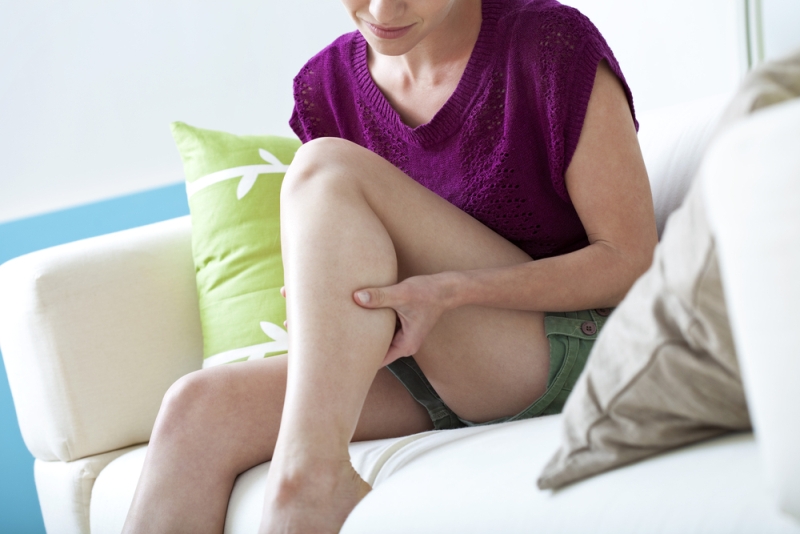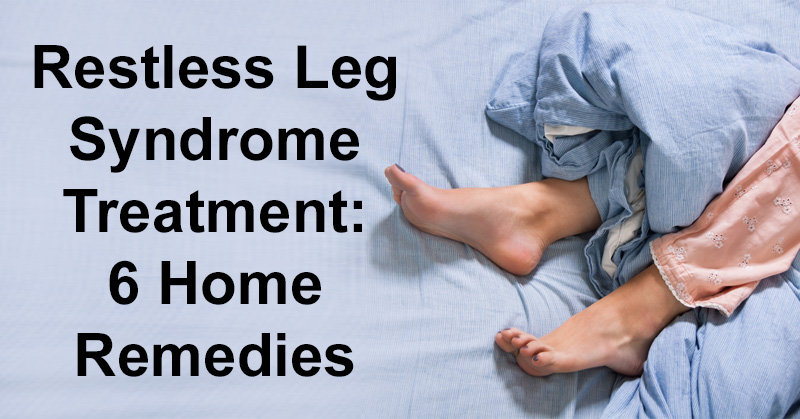Restless leg syndrome is a common neurological sensorimotor disorder in which a person feels an urge to move their legs during periods of rest. The disorder can be caused by a variety of factors, including genetics, nutrient deficiencies, pregnancy and autoimmune disorders. Symptoms of the condition may be completely relieved by movement, but become worse in the evening or at nighttime. (1) Conventional restless leg syndrome treatment may involved medications to help control movement. Restless leg syndrome home remedies can help prevent the disorder and naturally manage symptoms.
Restless Leg Syndrome Causes
- Genetics
- Anemia or iron deficiency
- Other nutrient deficiencies, including magnesium or folate
- Varicose veins
- Chronic medical conditions affecting the kidneys or lungs
- Pregnancy
- Use of medications containing estrogen
- Autoimmune disorders or diabetes
- ADHD
- Cognitive disorders, including Parkinson’s disease

Restless Leg Syndrome Symptoms
- Sensations in the legs that are described as creeping, crawling, jittery, burning or aching
- A strong urge or feeling that you need to immediately scratch, move, jiggle or stretch the legs in order to make sensations stop
- Temporary relief from symptoms when you move the legs
- Involuntary leg twitches and jerks, similar to having a cramp
- Getting poor sleep due to feeling uncomfortable and waking up often (2)
Restless Leg Syndrome Treatment
1. Eat a Healthy Diet
Nutrient deficiencies are considered a risk factor for restless leg syndrome. To help prevent a deficiency, it’s important to eat a healthy, well-balanced diet. (3)
Restless leg syndrome treatment foods include:
- Foods that contain magnesium, potassium and calcium, such as leafy green vegetables, avocado, beans, bananas, sweet potatoes, nuts and seeds
- Foods that help balance blood sugar levels such as rolled oats, quinoa, buckwheat and wild rice
- Healthy fats that lower inflammation, including coconut oil, olive oil, avocado, nuts and seeds
Foods that can worsen restless leg syndrome include:
- Add sugar or artificial sweeteners
- Caffeinated drinks and alcohol
- Trans fats or refined oils
- Processed carbohydrates and grains

2. Consume Enough Iron
An iron deficiency may the root cause of your restless leg syndrome. Be sure to consume plenty of foods high in iron and B vitamins, including folate. Take a multivitamin that includes B vitamins and iron as a restless leg syndrome treatment, or add iron-rich foods to your diet. Iron-rich foods that can aid in restless leg syndrome treatment include spirulina, lentils, spinach, dark chocolate, black beans, pistachios and raisins. (4)
3. Take Warm Epsom Salt Baths
Restless leg syndrome home remedies include Epsom salt baths. Epsom salt is a natural anti-inflammatory that can help sooth muscles and reduce spasms. Add 1-2 cups of Epsom salt to warm bath water and soak in the bath for at least 20 minutes as a restless leg syndrome treatment. (5)
4. Use Essential Oils and Massage Therapy
Several essential oils can be used as restless leg syndrome home remedies. Cypress, rosemary, lavender and cedarwood essential oils have natural antispasmodic qualities which can help stop spasms, cramps and muscle pain. Apply these essential oils to the affected areas of the legs before bed. (6) Effective restless leg syndrome remedies also include massage therapy. Regular massages can help soothe painful areas and boost circulation to prevent muscle spasms.

5. Exercise and Stretch
Certain stretches and exercises can work as restless leg syndrome home remedies to alleviate pain and other symptoms. A 2006 study found that a combination of moderate aerobic exercises and lower-body resistance training helped significantly reduce the severity of symptoms when performed at least three times per week. (7) Stretches that work as restless leg syndrome remedies include:
- Calf stretches such as lunging
- Forward bending to stretch hamstrings
- Quad stretches performed by standing on one leg, folding the other leg and pulling it behind you
- Hip stretches done by sitting on the ground with the legs bent and open like a book
- Stretching the hell against a flat wall by bending the toes and foot back toward you
- Getting up and moving the legs after you’ve been sitting for a long time
6. Prioritize Sleep and Stress Management
Restless leg syndrome can increase your risk of insomnia, chronic stress and fatigue. Sticking to a steady bedtime routine can help reduce sleep problems. Restless leg syndrome remedies to help you get a better night’s sleep and reduce stress include:
- Avoiding electronics within several hours of bedtime
- Exercising during the day to feel more tired at night
- Stretching and doing yoga
- Taking hot baths or showers
- Massaging your legs
- Deep breathing and body relaxation techniques
- Medication and prayer
- Writing in a journal
- Reading something soothing


